
Last week, I visited the rather wonderful tank museum (http://www.tankmuseum.org/home) at Bovington in England, UK. Fascinating, and I am happy to have seem so many legendary machines for real.
Getting there seems to be a matter or driving. The Tank Museum is roughly 200 km (120 miles) away from London, but we used Southampton as our base, and thus we got two 100 km drives rather than a single long one. Indeed, for exploration of south-western England, Southampton is a pretty good location (for example, visiting the Historic Dockyard in Portsmouth).

The tank museum main building is modern and spacious, and covers the history of the tank and a collection of modern, primarily British, tanks. The greatest number of tanks are from World War II, and much of the museum does seem dedicated to that greatest of wars. With the centennial of World War I, there is a new exhibition showing trench life and providing the gory context for the development of the first tanks. They have a surprising number of early tanks on exhibit, actually, including Little Willie, the first complete tank prototype.

It is quite interesting to note that it was the Royal Navy, under the leadership of First Lord of the Admiralty Winston Churchill who drove the initial development. The story as told here is that Churchill used the navy to avoid being blocked by the backwards-striving Army brass.
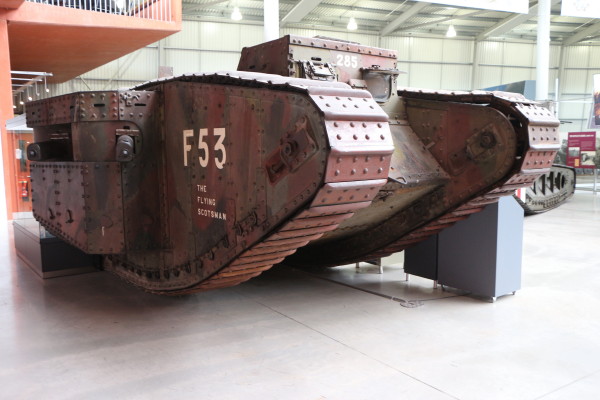
When we get to World War II, it is clear that the stars of the show are the German tanks. This is a British museum, and they do show British tanks too. Which are perfectly nice tanks, but nothing can compare to the sheer allure and cachet of the “big cats”. Even for the museum curators themselves it seems. Bovington has all the big names. Tiger, Tiger II, Panther, Jagdpanther, Jagdtiger… and displayed in striking poses and in places where they really show off.

“Tiger 131“, captured in North Africa and still in running order.
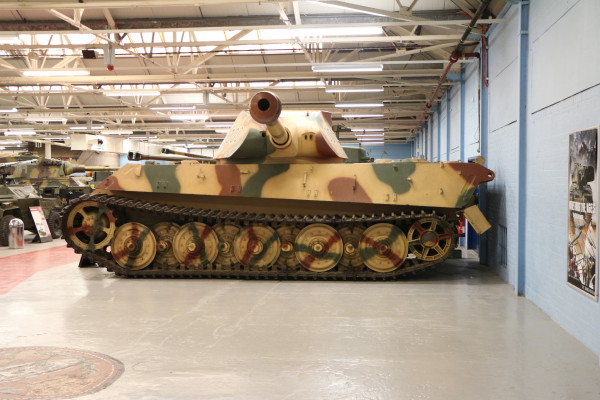
Panther

King Tiger
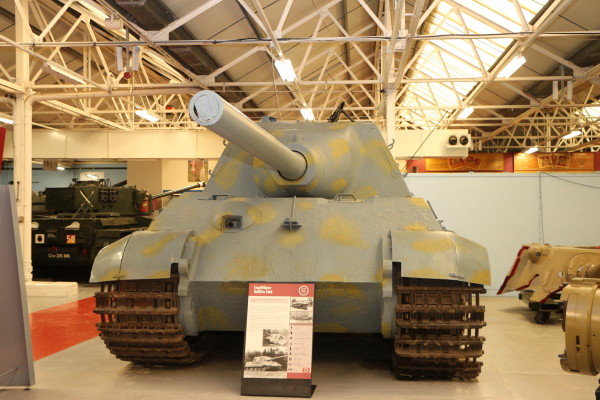
Jagdtiger

Jagdpanther
Going post-war, there are Centurions en masse, quite a few Chieftains, a Conqueror, and several Challengers. Including the mockup-prototype parked right outside the entrance to the museum.
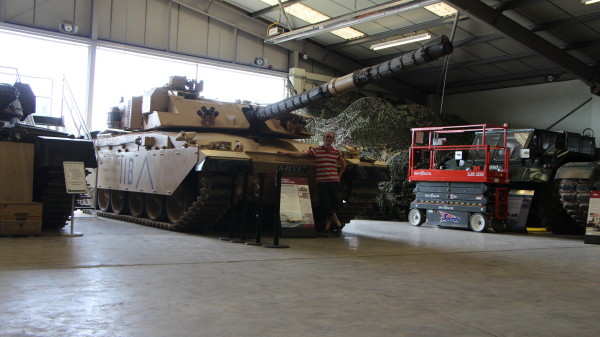
Challenger, parked next to a Chieftain and the Conqueror.
One thing that the museum did that was quite surprising but really smart was to show just how gigantic modern tank guns have become. They have them set up against the wall in one of the halls, so that you can compare them in size to a human. The longest barrel in the picture below is an early US 120mm gun barrel, flanked by more modern and slightly less massive 120mm barrels.
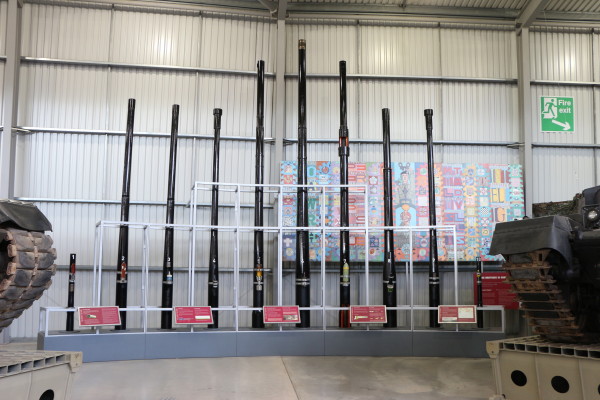
There other nice touches, such as showing the size of the ammunition used for the World War II-era tanks, where it is clear just how much more power there was in a 88mm or long 75mm gun compared to smaller and shorter guns. There were also little details noted on the description of the tanks that taught me things I did not know before, such as the fact that the Christie suspension tanks tended to have a large gap above the tracks to provide travel for the suspension, and that German tanks had an escape hatch at the rear of the turret (providing a much safer route away than a door on the top of the turret or the side of the tank).

Another Panther, showing the rear-of-turret escape hatch.
One thing that I did come away slightly disappointed by is that there wasn’t very much about the interiors of the tanks and how the crew actually sat inside them. There was some text about the reclining seat of the Chieftain driver and the cramped interiors of the T-72… but that could have been shown in some kind of model or cut-out or something. It would have been quite interesting to see just how much a driver in a tank could see out, or how the sights of a gunner shows the world.
I understand that you cannot just let people crawl through a tank – too many hard and sharp things and easy to get hurt. But still, something could be done to explain the life inside the tank. Now, the museum ends up being more of a shrine to the machine and its exterior – rather than explaining the hows of the internals and the human side of armored warfare. Right now, the best the museum has on this is the “cut-apart Centurion”, which is very nice. Just would have liked to see more of this.

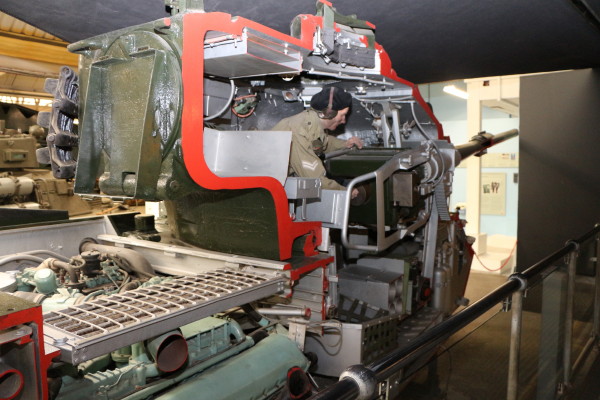
If it wasn’t already obvious, all images here are my own of my own copyright.